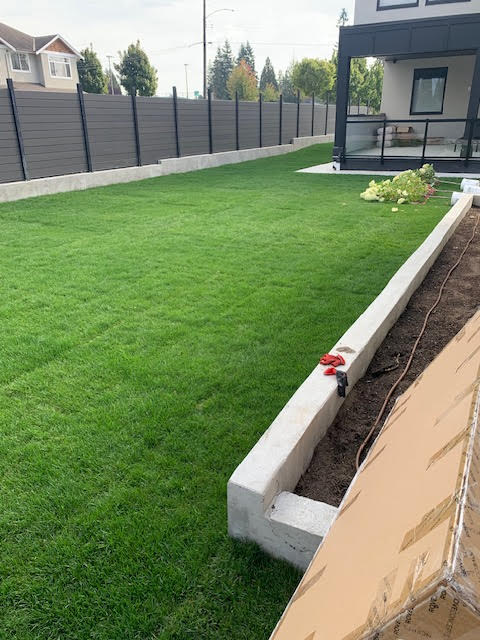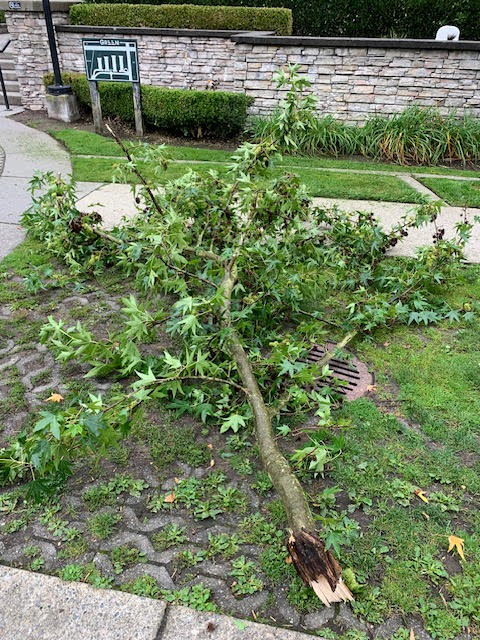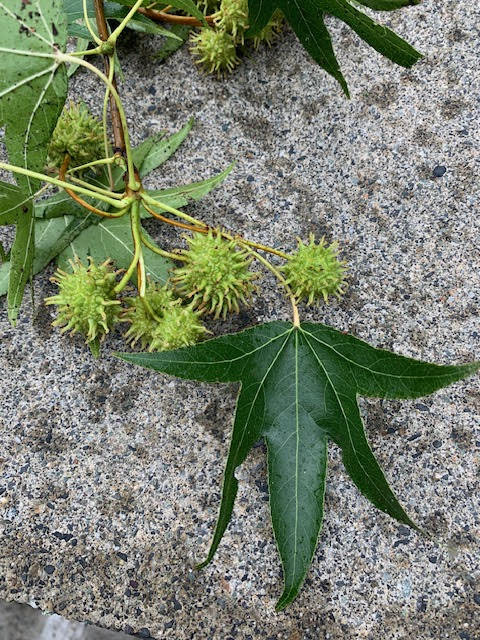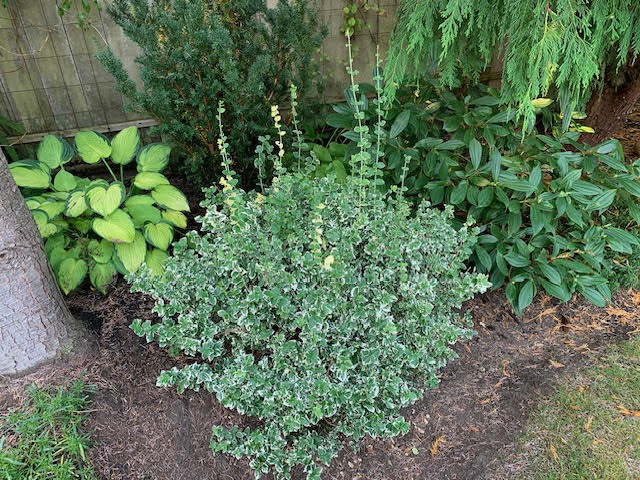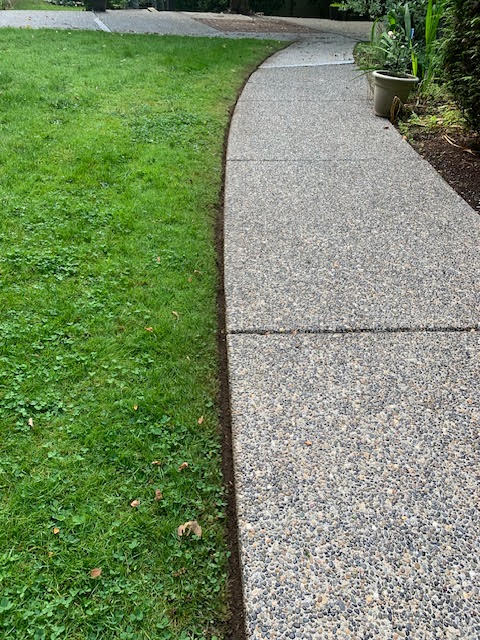A tough spot
Imagine grass growing on a fire lane made with bricks and very little soil on top; and towering above are mature Katsura trees (Cercidiphyllum japonicum) which limit the amount of sunlight the grass gets. These conditions, limited light and soil volume, make it difficult for the grass to thrive. Now, add lack of irrigation and foot traffic and no wonder the entire fire lane has a patchy look.
If you want a great lawn, you need regular watering, fertilizers and proper cutting heights.
Some years ago, we top dressed the fire lane with quality, weed-free, lawn and garden mix soil. Then we put down quality – and expensive- shade seed mix; and for a while everything looked great. Then the same poor conditions took over. Shade from the trees above, lack of regular watering and relentless foot traffic from adults, kids, and pets.
2023
In 2023 the strata council became more active in their landscape. They organized weekend work parties and planted their own plants like English laurels. This allowed them to build a community and save money. Incidentally, this strata complex is where my favorite fern lady lives. She’s the one who bought a native sword fern (Polystichum munitum) at a native plant nursery with after-tax dollars. If she had taken a shovel and traveled maybe ten metres into her forest buffer zone, she could have dug up massive specimens for free.
So, this same strata group decided to plant clover in their fire lane. Clover mixes nicely with grass, when it matures and flowers, it attracts insects, it grows fast, and it’s not as demanding as grass. It’s also disliked by European chafer beetles. Of course, since this lawn has limited soil volume, it’s unlikely the female chafers would lay their eggs in it. Clover is also cheap to buy and available.
Months after planting the clover is noticeable and there are fewer bare patches in the fire lane lawn.
One look and I would call the whole clover project a success; and it didn’t break the budget. It also fits nicely in a forest setting.



